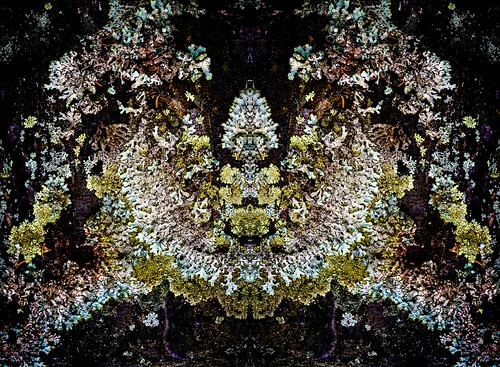I’ve started to build oook.info/lexicon/ to contain the project that I’ve been gathering material for at oook.info/etc/lexicon.html. I expect it will summarize a sprawling domain of explorations, just right for a winter month.
Category Archives: onomastics
as promised, or threatened
Full-frontal Spiritual Manifestations: gods, godlets, daemons and other beings is now live in extremely provisional form.

a very minor godlet of something beneath notice
apprehensive Cucurbita pepo
Here’s one of those bits of visual serendipity that keeps me barreling down the figurative mountain of photographic wonderment. Ever on the lookout for interesting patterns in rocks, and especially for little faces peering up at me, I collected this one a few days ago:

I wish I understood better the geological processes of formation and erosion that produced the laminar structure of this cobble, with its pupil’d eve and the vein of quartz seeming to define a mouthful of teeth. I’m almost content to accept them/it as Nature’s gift to my Quixotic search for rock persons, though I know it’s basically my overheated imagination at work.
Still, it wasn’t until I mirrored the image that the message of this particular lithic citizen emerged:

I’m learning to trust my own first thoughts when a mirrored image appears on the computer screen. For this one: Late November Pumpkin expresses something of the existential dread that accompanies the slide into Winter, when the leaves are down and the nights are colder. This pumpkin senses what’s coming, the inevitable Sartrean desuetude and decay and consignment to the compost heap… There’s something Charlie Brown-like about that crinkle of the mouth, the inevitable snatch-away of the football just about to be kicked.
Thanks to the unexpected appearance of the November Pumpkin, another Project is in the offing, starting to gather downhill speed as I rifle through the archive of tessellations with a weather eye out for appearances of super-naturals. I have a working title
Full-frontal Spiritual Manifestations: gods, godlets, daemons and other beings
and soon there will be a Weblet to display the work in progress. Stay tuned.
Lighting Out for the Territory
I’m in the early stages of thinking my way into a book project dealing with photographs of rock, provisionally titled Just Rocks: A Lithic Menagerie, including work I’ve done in the last few years and continuing some lines of thought I began in YMMV: Studies in Occultation [right-click to download large pdf].
Just Rocks will include rock portraits and tessellations which disclose creatures and designs hidden in geological formations. Most of the images are exercises in visual imagination, and address the process of developing and augmenting the capability to see forms and patterns that are not objectively there, but are imaginary tracings that abstract lines and shapes from background complexities.
A few examples:

a sardonic grin
A wave-tumbled rock on a beach at Great Wass Island, less than 4 inches across and weighing perhaps half a pound. Ephemeral in that it was captured in the camera but not brought home, and is now lost forever. An object of contemplation, an exercise in naming (‘sardonic’ is my subjective reading, but you may see something else—and that’s the whole point).
Beaches along the coast of Maine are the locus of many of the rock portraits, and the process of discovery is worth some attention. The scatter of beach rock is a stage in a random process of erosion driven by twice-daily tides, which eventually produce sand and so recycle the minerals locked up in stone. This is a view of a small part of Drift Inn beach, a couple of miles from home:

In the last 10 days or so at Drift Inn I’ve done scores of photographs of rocks that seemed to have personalities, to express imaginative creaturehood, to be more than just rocks. Each day I’ve found new examples, though I’ve also returned to several to try to capture them better. Here’s an example of the process:

In the midst of the chaos of scatter, we observe a rock that has been broken into five squarish pieces. Bits of pebble and shell have found their way into the interstices

and were awaiting my discovery:

cubist portrait
Another example, this one a tessellation that unfolds a geological mini-saga of marble inclusion

to produce this:

female avatar of Poseidon/Neptune bracketed by White Whales
As I’ve noted elsewhere (see Tessellations [right-click to download large pdf]), one may well ask if the avatar and the whales were there all along, waiting to be liberated, or if I created them by digital legerdemain, and/or called them into existence by an onomastic hey-presto…
So that’s some of the territory I’m lighting out to explore this winter.
Onomastical exegesis
Some of the profounder truths/more ineffable mysteries lurk in how things are named. Why ‘toothless’ for this image, asks Bryan:

Part of the explanation has to do with the momentary flash of inspiration to which I’ve learned to attend as I’m processing images, and which I am happy to identify as macchia (“the total compositional and coloristic effect of an image in the split second before the eye begins to parse it for meaning,” more fully adumbrated in a posting from four years agone, and thanks to Teju Cole for the word). “Toothless” was the macchia that breezed through my mind on first glance at the original image (the right-hand side of the composite mirror image above):

John also suggested that the image might be flipped:

It’s an essential component of the Homo narrans toolkit that things be given names to celebrate their essence, and perhaps to summon them (or protect against them) at need. But we must always heed Max Nigh’s Dictum: Just because we’ve named it doesn’t mean we know anything about it.